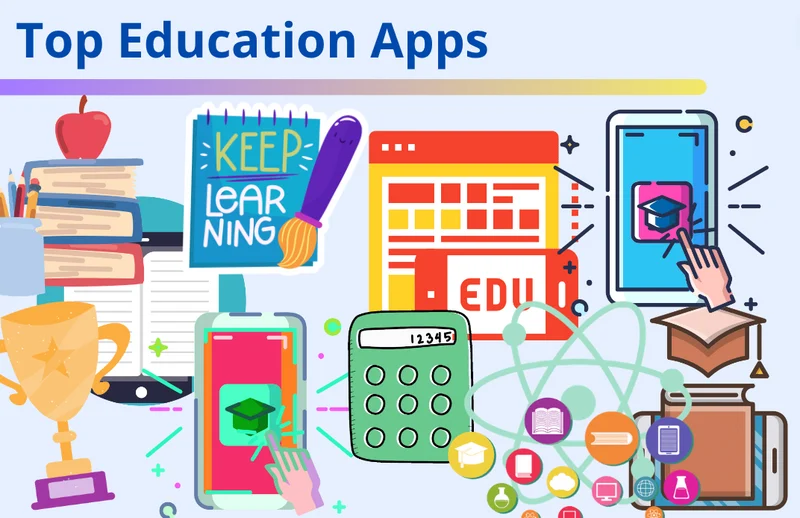Top Educational Software Transforming Learning In 2024
In 2024, the top educational software is revolutionizing the way students learn, with interactive platforms, personalized learning experiences, and advanced analytics. These software programs are designed to enhance student engagement, facilitate collaboration, and provide instant feedback, ultimately transforming traditional classroom settings. With the integration of artificial intelligence and virtual reality, these educational software are creating immersive learning environments, preparing students for the challenges of the future.
As we look at the landscape of educational technology in 2024, it’s clear that the concept of learning has evolved beyond traditional methods. The use of gamification, adaptive learning, and augmented reality has become prominent in educational software, catering to diverse learning styles and preferences. Moreover, the emphasis on data-driven insights, real-time assessment, and personalized learning paths has gained significant attention, allowing educators to tailor their approach to individual student needs. Additionally, the integration of blockchain technology and cybersecurity measures has become essential in ensuring the security and integrity of educational software platforms, addressing concerns about data privacy and protection.
1. Personalized Learning Platforms
Personalized learning platforms are educational software that use adaptive learning algorithms to tailor the learning experience to each individual student. These platforms analyze each student’s strengths, weaknesses, and learning style to deliver customized content and activities. By providing personalized learning paths, these platforms can help students learn at their own pace and in a way that suits their unique needs, ultimately leading to improved learning outcomes.
Furthermore, personalized learning platforms often incorporate features such as progress tracking, assessment tools, and real-time feedback, allowing both students and educators to monitor performance and make data-driven decisions. With the advancements in AI and machine learning, these platforms continue to evolve, offering increasingly sophisticated and effective personalized learning experiences.
2. Virtual Reality (VR) and Augmented Reality (AR) Tools
Virtual reality and augmented reality tools are revolutionizing the way students engage with educational content. VR technology immerses students in simulated environments, allowing them to explore and interact with concepts in a more immersive and experiential manner. On the other hand, AR technology overlays digital information onto the real world, enhancing the learning experience by adding a layer of interactivity and engagement.
These tools can be used across various subjects, from history and science to art and geography, providing students with opportunities to visualize complex concepts and gain a deeper understanding through hands-on experiences. As VR and AR technologies become more accessible and affordable, their integration into educational software is becoming increasingly prevalent, offering a new dimension of learning for students.
3. Gamified Learning Platforms
Gamified learning platforms leverage game mechanics and design principles to make learning more interactive and engaging for students. By incorporating elements such as points, badges, leaderboards, and rewards, these platforms motivate students to actively participate in their learning journey and maintain their enthusiasm for educational content.
Through gamification, students can experience a sense of accomplishment as they progress through levels, complete challenges, and master new skills. Additionally, gamified learning platforms often foster collaboration and healthy competition among students, further enhancing their overall learning experience. As a result, these platforms have the potential to increase student motivation and retention while making learning more enjoyable.
4. Adaptive Assessment and Feedback Systems
Adaptive assessment and feedback systems utilize AI-driven algorithms to continuously evaluate and provide personalized feedback to students as they engage with educational content. These systems can dynamically adjust the difficulty of questions based on the student’s performance, ensuring that assessments remain challenging yet achievable.
Moreover, adaptive feedback systems offer targeted guidance and support to help students address areas of weakness and reinforce their strengths. By providing immediate and tailored feedback, these systems enable students to track their progress, identify areas for improvement, and ultimately enhance their learning outcomes. As educational software continues to integrate adaptive assessment and feedback systems, the potential for personalized and effective learning experiences continues to expand.
5. Collaborative Learning Platforms
Collaborative learning platforms facilitate group interactions and teamwork among students, regardless of their physical location. These platforms offer features such as real-time collaboration tools, discussion forums, and shared workspaces, enabling students to engage in cooperative learning activities and projects.
By fostering collaboration, these platforms promote the development of communication, critical thinking, and problem-solving skills, which are essential for success in the modern workforce. Additionally, collaborative learning platforms can create a sense of community and connectedness among students, despite being physically distant. As the trend towards remote and hybrid learning continues, the importance of collaborative learning platforms in fostering meaningful interactions among students is increasingly recognized.
6. Adaptive Content Delivery Systems
Adaptive content delivery systems utilize AI and machine learning to personalize the presentation of educational materials based on the individual needs and preferences of students. These systems can modify the format, pace, and complexity of content to accommodate diverse learning styles and abilities, ensuring that each student can effectively engage with the material.
Furthermore, adaptive content delivery systems can provide additional support resources, such as multimedia content, interactive simulations, and supplementary materials, to enhance the learning experience. By catering to the unique requirements of each student, these systems strive to optimize knowledge retention and comprehension, ultimately contributing to more effective and inclusive learning environments.
7. Interactive Simulation and Modeling Tools
Interactive simulation and modeling tools enable students to visualize and manipulate complex concepts in a virtual environment, fostering deeper understanding and critical thinking skills. These tools can be particularly valuable in STEM (science, technology, engineering, and mathematics) education, where abstract or intricate principles can be difficult to grasp through traditional methods.
By allowing students to experiment with variables, observe cause-and-effect relationships, and simulate real-world scenarios, these tools empower students to explore and comprehend concepts in a hands-on and experiential manner. As educational software continues to integrate interactive simulation and modeling tools, students can benefit from enhanced learning experiences that transcend the limitations of traditional classroom instruction.
8. Data Analytics and Learning Insights Platforms
Data analytics and learning insights platforms collect and analyze data on student performance, engagement, and learning patterns, providing valuable insights for educators to make informed instructional decisions. These platforms can offer visualizations, reports, and predictive analytics to identify trends, areas for improvement, and opportunities for personalized interventions.
By leveraging data-driven insights, educators can adapt their teaching strategies, provide targeted support to students, and optimize the overall learning experience. Furthermore, data analytics and learning insights platforms enable educational institutions to assess the effectiveness of curriculum and instructional methods, leading to continuous improvement and innovation in the field of education.
9. Language Learning and Translation Tools
Language learning and translation tools facilitate the acquisition of new languages through interactive exercises, multimedia content, and real-time translation assistance. These tools can cater to various proficiency levels and learning goals, offering personalized learning pathways and adaptive feedback to support students in their language learning journey.
Additionally, language learning and translation tools can enhance cultural awareness and global communication skills, preparing students for an increasingly interconnected world. As the demand for multilingual proficiency continues to grow, these tools play a crucial role in providing accessible and effective language education to learners of all ages.
10. Accessibility and Inclusivity Features
Educational software is increasingly incorporating accessibility features to ensure that all students, including those with disabilities, have equal opportunities to engage with educational content. These features may include screen readers, alternative text for visual elements, keyboard navigation, and adjustable contrast settings, among others.
By prioritizing accessibility and inclusivity, educational software aims to create an environment where every student can participate and succeed, regardless of individual challenges or differences. As technology continues to advance, the focus on accessibility features in educational software serves to promote diversity, equity, and inclusion in learning environments.
| Software | Description |
|---|---|
| Google Classroom | An online platform for schools to create, distribute, and grade assignments. It also allows for communication between teachers and students. |
| Kahoot! | A game-based learning platform that makes it easy to create, share and play learning games or trivia quizzes. |
| Zoom | A video conferencing software that is widely used for remote learning, allowing for virtual classrooms and meetings. |
| Scratch | A programming language and online community where students can create and share interactive media such as stories, games, and animation. |



